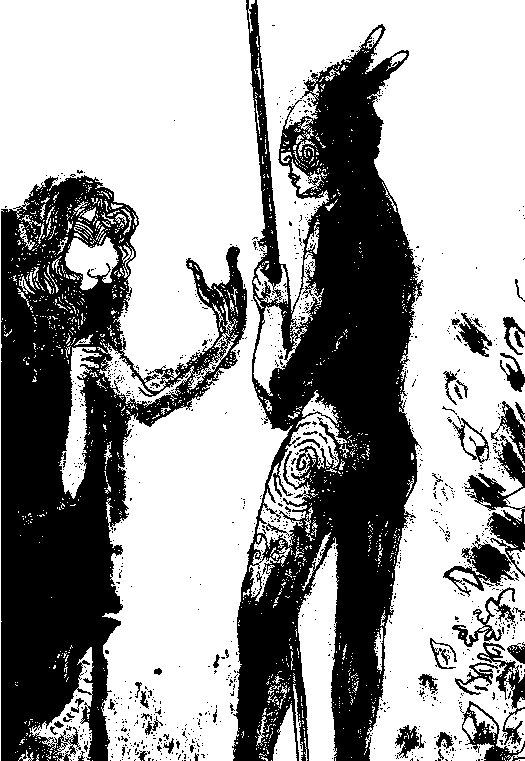The numbers of Mercury (115, 230, 460) had evidently influenced not only the dates in Manuscript E but also the mind of the creator of the G text, because, we remember, glyph 230 was at the beginning of side b on the tablet:
And glyph 230 counted from the beginning of side b was at the first of the Pleiades birds: ... When the creators of Manuscript E came up with the name Teke (Occiput) they could have been inspired by the 6 (ono, as in Tau-ono) unique 'occiput-birds' at the end of side b on the G tablet. To make their writings understandable they had to take account of the glyphs on the G tablet (which text had been published recently) ...
Tautoru. The Belt of Orion. Van Tilburg. Mgv.: 1. Toutoru, Orion's belt. Mq.: tautou, a constellation of three stars. 2. Toutoru. hung by threes. Mq.: tautou, id. Churchill. Tauono. 'Six stones' = Pleiades = Matariki. Van Tilburg.
North of the equator they counted with 7 such 'birds' (stars), but anciently the correct number had been given as 6, because the 7th was 'lost'. ... The Mahabharata insists on six as the number of the Pleiades as well as of the mothers of Skanda and gives a very broad and wild description of the birth and the installation of Kartikeya 'by the assembled gods ... as their generalissimo', which is shattering, somehow, driving home how little one understands as yet. The least which can be said, assuredly: Mars was 'installed' during a more or less close conjunction of all planets; in Mbh. 9.45 (p. 133) it is stressed that the powerful gods assembled 'all poured water upon Skanda, even as the gods had poured water on the head of Varuna, the lord of waters, for investing him with dominion'. And this 'investiture' took place at the beginning of the Krita Yuga, the Golden Age ...
... To a casual glance, the Pleiades cluster appears as a fuzzy patch like a swarm of flies over the back of the bull ... According to mythology, Alcyone and Celaeno were both seduced by Poseidon. Maia, the eldest and most beautiful of the sisters, was seduced by Zeus and gave birth to Hermes; she later became foster-mother to Arcas, son of Zeus and Callisto. Zeus also seduced two others of the Pleiades: Electra, who gave birth to Dardanus, the founder of Troy; and Taygete, who gave birth to Lacedaemon, founder of Sparta. Asterope was ravished by Ares and became mother of Oenomaus, king of Pisa, near Olympia, who features in the legend of Auriga. Hence six Pleiades became paramours of the gods. Only Merope married a mortal, Sisyphus, a notorious trickster who was subsequently condemned to roll a stone eternally up a hill ...
... The Pirt-Kopan-noot tribe of Australia have a legend of a Lost Pleiad, making this the queen of the other six, beloved by their heavenly Crow, our Canopus, and who, carried away by him, never returned to her home ... The G text evidently transformed the last one of the occiputal rain birds
... There is a couple residing in one place named Kui and Fakataka. After the couple stay together for a while Fakataka is pregnant. So they go away because they wish to go to another place - they go. The canoe goes and goes, the wind roars, the sea churns, the canoe sinks. Kui expires while Fakataka swims. Fakataka swims and swims, reaching another land. She goes there and stays on the upraised reef in the freshwater pools on the reef, and there delivers her child, a boy child. She gives him the name Taetagaloa. When the baby is born a golden plover flies over and alights upon the reef. (Kua fanau lā te pepe kae lele mai te tuli oi tū mai i te papa). And so the woman thus names various parts of the child beginning with the name 'the plover' (tuli): neck (tuliulu), elbow (tulilima), knee (tulivae) ... into a man (a mortal) and shifted him a year ahead, leaving an empty place behind: ... But beyond their role as points of communication with the Underworld, James Brady of George Washington University has told us that in the Maya mind caves were intimately associated with mountains, and that it is in such caves that it was and still is believed that fertilizing rain is created before being sent into the sky; even today ceremonies are held inside them at the onset of the rainy season ... ... The 'rainy' Hyades the ancients said. When the Pleiades reappear they will bring rain ...
... The Pythagoreans make Phaeton fall into Eridanus, burning part of its water, and glowing still at the time when the Argonauts passed by. Ovid stated that since the fall the Nile hides its sources. Rigveda 9.73.3 says that the Great Varuna has hidden the ocean. The Mahabharata tells in its own style why the 'heavenly Ganga' had to be brought down. At the end of the Golden Age (Krita Yuga) a class of Asura who had fought against the 'gods' hid themselves in the ocean where the gods could not reach them, and planned to overthrow the government. So the gods implored Agastya (Canopus, alpha Carinae = Eridu) for help. The great Rishi did as he was bidden, drank up the water of the ocean, and thus laid bare the enemies, who were then slain by the gods. But now, there was no ocean anymore! Implored by the gods to fill the sea again, the Holy One replied: 'That water in sooth hath been digested by me. Some other expedient, therefore, must be thought of by you, if ye desire to make endeavour to fill the ocean ...
... The story of Samson stands out in the Bible as a grand theme of absurdities. Sunday school pupils must long have been puzzled about his weapon for killing Philistenes. But there is much more to puzzle about (Judges XV): 15. And he found a new jawbone of an ass, and put forth his hand and took it, and slew a thousand men therewith. 16. And Samson said, with the jawbone of an ass, heaps upon heaps, with the jaw of an ass have I slain a thousand men. 17. And it came to pass, when he had made an end of speaking, that he cast away the jawbone out of his hand, and called that place Ramathle'hi. 18. And he was sore athirst, and called on the Lord, and said, Thou hast given this great deliverance into the hand of thy servant: and now shall I die for thirst, and fall into the hand of the uncircumcised? 19. But God clave an hollow place that was in the jaw, and there came water thereout; and when he had drunk, his spirit came again, and he revived: wherefore he called the name thereof En-hak'ko-te, which is in Le'hi unto this day, 20. And he judged Israel in the days of the Philistines twenty years. The passage has been bowdlerized in the Revised Version to make it more plausible, but verse 18 is an unshakable reminder that this was not an ordinary bone, or even 'the place' of it as suggested recently. For that jaw is in heaven. It was the name given by the Babylonians to the Hyades, which were placed in Taurus as the 'Jaw of the Bull'. If we remember the classig tag 'the rainy Hyades' it is because Hyades meant 'watery'. In the Babylonian creation epic, which antedates Samson, Marduk uses the Hyades as a boomeranglike weapon to destroy the brood of heavenly monsters. The whole story takes place among the gods. It is known, too, that Indra's powerful weapon, Vaira, the Thunderbolt made of the bones of a horse-headed Dadhyank, was not of this earth ...
... The jawbone is a percussion instrument consisting of the lower jawbone of a donkey, horse or zebra. The jawbone is dried out and the teeth loosened. When struck with the hand, the teeth rattle, producing a powerful buzzing sound. The playing technique involves striking the large end of the jaw with the palm, or a beater is used to strike the teeth or bone and pulled along the teeth which act as a rasp. These ingredients provide the basis for a wide variety of combinations and rhythms. In Spanish the jawbone is called quijada. It is one of the main instruments used by Afro-Peruvian musical ensembles and is used in many other Latin American cultures ...
... Soon after he had found where his parents lived Maui carried off and slew his first victim. She was the daughter of Maru te whare aitu, and when he had dealt with her in a brutal fashion he dealt with her father also. By means of enchantments he caused this old man's crops to wither, and they were all destroyed. He then decided to make another visit to his parents, and this time he remained for a while in the country of the manapau trees. One day he noticed that some people were in the habit of carrying to a certain place some kono, or small baskets of food, for some old person. 'Who is that food for?' he asked them, and one of the people who were going with it answered: 'It is for your ancestress Muri ranga whenua.' 'Where does she live?' he asked, and they answered, 'Over there.' 'All right,' he said, 'That will do now. Leave the kono here. I will take them to her myself.' From that time on Maui himself carried the daily presents of food that were meant for that old woman. But he never gave them to her, he merely went towards the place where she lived and hid the food in the bushes, and this he did for many days. At length the old chieftainess realised that there was some mischief going on, and the next time Maui came by she put her nose in the air and sniffed. She sniffed and sniffed, feeling sure that there was food not far away. By now she was greatly exasperated by her many days of hunger, and her stomach began to swell out, ready to eat up Maui as soon as he came within reach. Leaning on her stick the old woman turned towards the south, and sniffed the air, but no scent of food or man could she detect. She turned her nose round slowly to the east, and then to the north, sniffing carefully at every angle. Still no scent of food or man could she detect, and she would have devoured either, instantly. She almost thought she must have been mistaken, but then she turned to the west for one more try. From the west, the scent of a man came plainly to her nose, and she cried: 'I know from the smell in this breeze that someone is close to me.' As she began to feel about her with her stick Maui murmured something, and she knew at once that he was a descendant of hers. Her stomach, which had been distended to a great size, began to shrink again. This was fortunate for Maui. If his scent had not been carried to that old woman's nose by the westerly breeze, she would certainly have eaten him up. When her stomach had resumed its normal size the old woman asked him, 'Are you Maui?' and he answered in a respectful voice: 'Even so.' Then she drew near and peered at him with her eyes that were nearly blind. 'Why did you cheat your old ancestress like that?' she said. 'Why have you been hiding my dinner, so that I have had nothing to eat these many days?' And she pointed with a crooked finger to her toothless and empty mouth. 'Ei?' she asked, and poked young Maui with her finger. In a voice that showed he was not in the least afraid of her, Maui answered: 'I was anxious that your jawbone, which has magic properties, should be given to me.' 'Take it,' said that old woman. 'It has been kept for you till now.' So saying she took her jawbone - for she was dead all down one side from being starved - and handed it to Maui. He carried it to the stream to wash off the blood and the bits of rotten flesh, and the blood went into the kokopu, giving that fish its reddish colour. After this he returned with the jawbone to the place where his brothers lived. Soon afterwards Maui took a wife, and this led to the first of the exploits that he performed with the help of the jawbone of his ancestress. His wife went one day to wash herself in a still stream, and while she was in the water Tuna roa, the ancestor of eels, came slithering around her and made himself objectionable. That is, he touched her most improperly. When she went home she said to Maui: 'There is a man in that pool with very smooth skin.' Maui at once felt jealous and decided to kill Tuna. He dug a trench beside the pool, and laid down nine logs as skids, so that Tuna might slide over them as when a canoe is launched. Then he told his wife to sit near the trench while he put up a screen to hide himself. Soon Tuna was seen swimming towards her, and as he slithered over the skids Maui ran out and slew him with the enchanted weapon. One end of Tuna went into the sea and became the ngoiro, or conger eel. The other end of Tuna became the fresh-water eel and is still called tuna. A part of him became the kareaou, or supple-jack, whose smooth black canes, like eels among the river-weed, entangle the forest undergrowth today. And the blood of Tuna was absorbed by the rimu, the totara, and other trees, giving their wood its reddish colour. After this exploit Maui lived quietly with his wife, and children were born to them ...
|
||||||||||||||||||||||||||||||||||||||||||||||||||||||||||||||||||||||||||||||||||||||||||||||||||||||||||||||||||||||||||||||||||||||||||||||||||||||||||||||||||||||||||||||||||||||





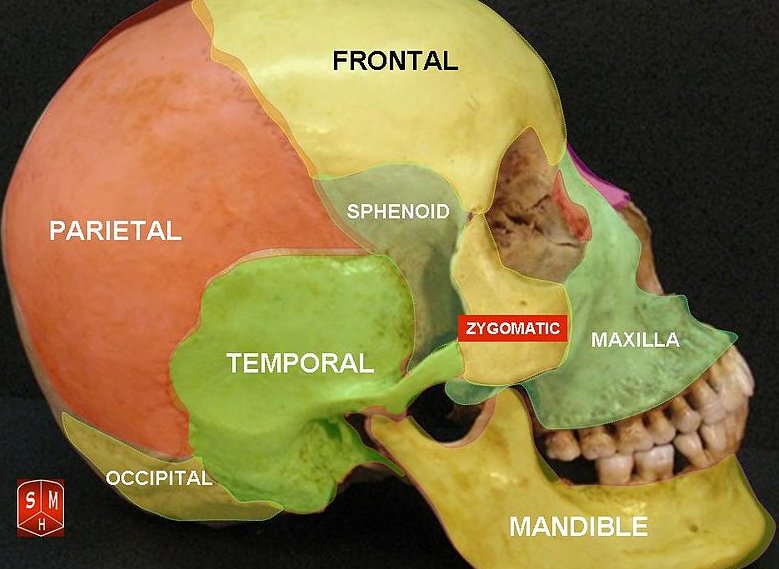


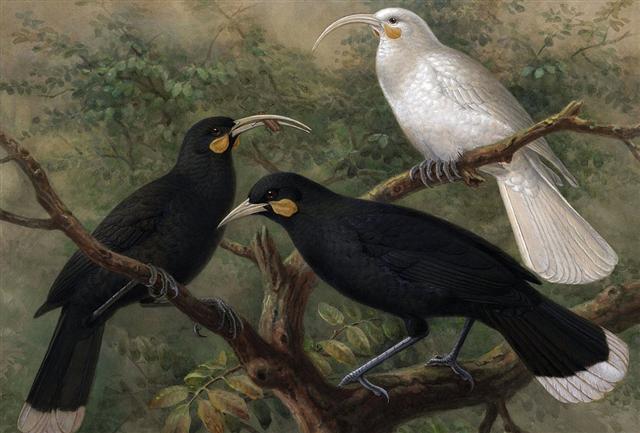
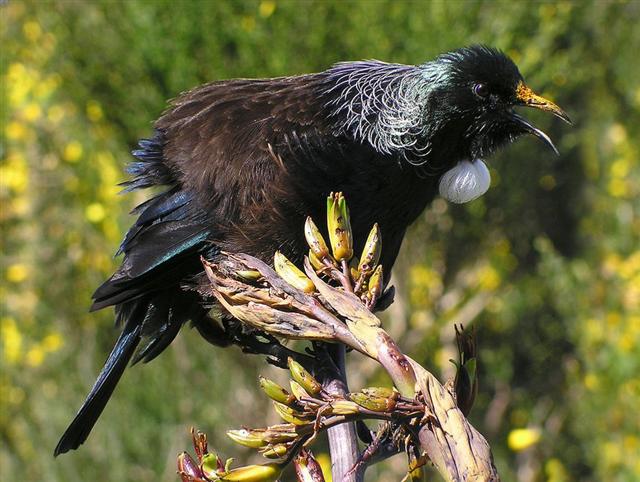


.jpg)




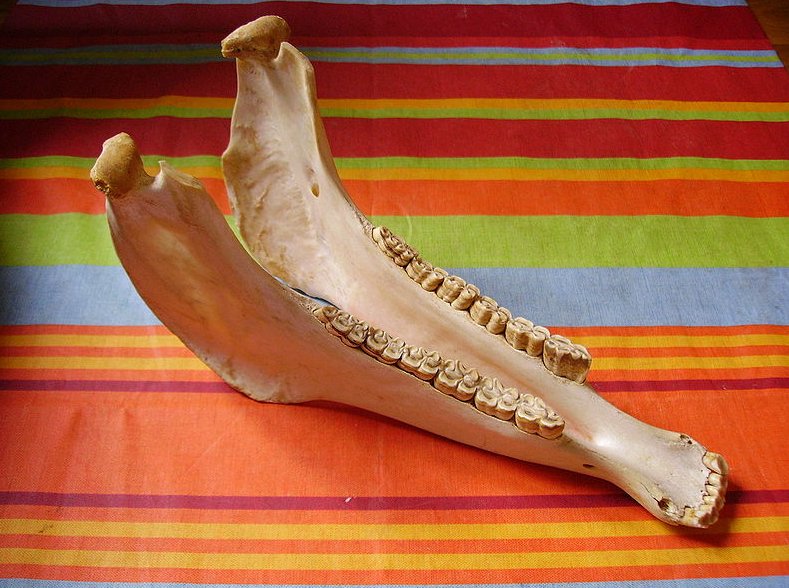
.jpg)
